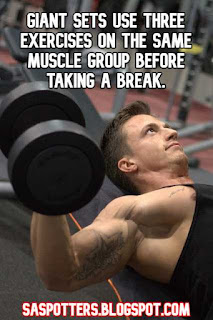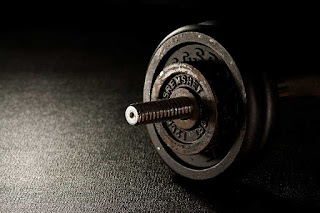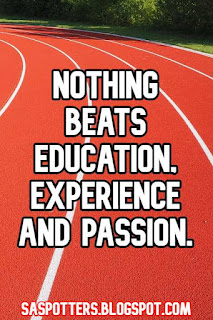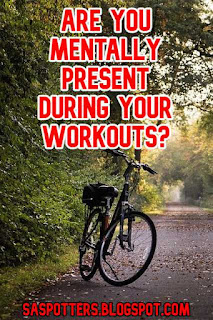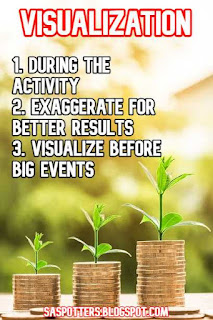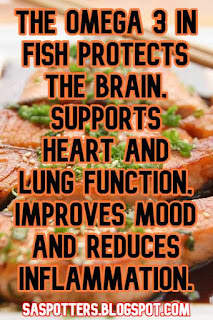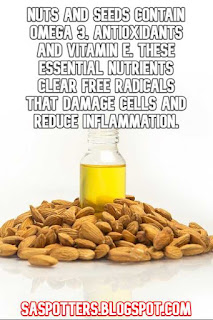This article is written by Rob Maxwell (learn about his education), M.A. Exercise Physiology, CSCS and ACSM CPT from www.fittothemax.net. Follow him on Twitter.
Different types of sets to intensify strength training
One of the first things that you learn is how to organize your workout when you start working out with weights. The exercises are chosen or picked for you. The number of sets, reps, and load are then chosen as well.
1. Straight sets
The most traditional way to begin a workout program regarding set programming is typically doing what we call straight sets.
An example of straight sets would be doing 3 sets of 10 reps. You can do 10 repetitions with the same weight 3 different times with a rest in between each.
It’s a terrific way to build initial strength.
2. Super sets
Follow one set of exercises with another set of exercises before taking a break. This is a single super set.
Supersets can be done in two separate ways.
Do super sets with antagonist muscle groups
The first way is to do the agonist exercise back-to-back with the antagonist. Agonist means the prime mover and the antagonist opposes the prime mover. All muscle groups have pairings such as these.
An example would be doing a biceps curl exercise followed by a triceps extension exercise. The triceps oppose to the biceps. It's the opposite motion.
A superset performed this way would be to do a standing bicep curl and superset it with a tricep press-down.
If you did 3 sets of 10 this way, it means that you do 10 reps on the curl and go immediately into 10 reps on the press-down with little to no rest.
Rest and repeat the entire cycle two more times for three total sets.
Super set upper and lower body parts
Another way to do a superset would be to pair an upper body exercise with a lower body exercise.
For example, you can do a barbell squat for your lower body and pair it up with a bench press for your upper body. You would do this the same way you did the above superset.
Benefits of super sets
This type of set programming is great if you want to spend less time in the gym. One area is working while the other is resting. It cuts down on rest time.
It is also good to keep blood flow in the area when it comes to doing the agonist and antagonist type of super set, which helps the muscle to grow.
It’s not good if you work out in a crowded gym and can’t dictate having two exercise areas open for you. If you can arrange the gym to your liking, you might as well cut down on some time.
3. Compound sets
Compound sets work the same muscle group in back-to-back sets of different exercises before taking a rest.
I love compound sets. Compound sets work the same muscle group in back-to-back sets.
For example, if you are working your biceps you can do a set of barbell curls and go right into dumbbell curls.
Like any other type of these sets, you can arrange the reps and sets to match your goals.
For example, if you do 4 x 8 on a compound set of biceps you would do 8 barbell curls and go right into dumbbell curls. You would repeat these three more times.
This is an extremely popular training method among body builders that are trying to add muscle (hypertrophy). It’s a great “mass” exercise. It is effective because you can train the muscle at more angles and you can cut down on time at the gym due to decreasing rest time.
You will have to use less weight when you do compound sets to reach your set and rep goals. That’s okay because your body only knows fatigue - it can’t really determine weight very well.
If you are an ego person and the weight is the reason you lift; it may not be your best strategy.
Again, like above, you will have to make sure that you have a gym that you can occupy two areas at once.
4. Giant sets
Do three or more sets in a row before taking a break.
Giant sets are great! They are a lot like compound sets, but you add at least one more exercise to the mix of the same muscle group. Giant sets are defined as training more than two exercises within the same muscle group in succession.
An example would be if you are training chest you could do the bench press, followed by the incline press, followed by the fly.
If you do 3 sets of 12 repetitions for each this means that you simply do 12 of one and go into the next and then the next before taking a break.
It’s a terrific way to keep more blood flow in the area that you are working - and you can train the muscle at more angles.
Naturally, like all of these, it cuts down on rest time so it’s more efficient.
The only drawback is that you would have to be able to pull this off in your gym space wise and you wouldn’t be able to use as much weight as usual. If you are training for size and tone, that should not matter as much to you.
5. Pre-exhaust sets
Pre-exhaust sets are defined as doing the primary exercise of a muscle group just prior to the compound movement.
For example, if you did a leg extension that isolates the quads and go right into a squat exercise which is a multi-joint exercise for the quads, you are doing a pre-exhaust set.
This is ideal for strengthening muscle groups that are being neglected because weaker areas are fatiguing before the area that you want to work fatigues.
As an example let's take the squat again. For many people, their lower back gets fatigued before the legs do. If you did a pre-exhaust set before you squat for your quads, you can make sure that doesn’t happen because the area you are trying to target is already fatigued.
You would have to do the second exercise (the compound exercise) much lighter. The only downside to this is that you must make sure the gym you are training at has the space for this and that you are getting to the second exercise as fast as possible.
Like with any of these techniques, you don’t want to exclusively do this for all of your training.
It is intense and you do not want to over train. You should mix in any of these techniques as you see fit, but keep in mind that they are more intense.
6. Breakdown sets
Do an exercise until failure and then do it again at a lower weight immediately.
Breakdown sets are a little different because you don’t leave the exercise. There are a couple of ways that you can do this.
They are done by taking the first set that you do to muscular failure and then dropping the weight and doing more reps.
There are two basic ways this can be done (and you can invent your own!).
Do 3-4 breakdown reps at 30% less weight
One way is to go to failure and then drop the weight by only 30% and try to do 3-4 more reps.
An example of this would be the cable chest fly. Let’s say you do 3 sets of 10 with a breakdown of 30%. You do the first set of 10 to failure and lower the weight by 30% and strive for 3-4 more reps. Rest and do this again two more times.
Try to do the same amount of reps for 50% of the weight
Another way is to go to failure, drop the weight by 50% and then try to match the reps that you did on the initial set.
In the second example you do 2 sets of 8 with a breakdown. For the chest press you do 8 reps at 50 pounds. You hit failure and drop the weight to 25 and do 8 more. Rest and do this again. Notice that I dropped the sets from 3 to 2. As you do more volume (reps and sets), you’ll want to make sure that you take this into consideration to avoid over training.
These are best done on weight machines since you have weight stacks that you can easily adjust.
Breakdown sets add intensity without using more equipment
This is a terrific way to add intensity to a workout without having to monopolize more than one area of a gym.
It also helps to work on form. When you drop the weight you can focus a little more on your form.
Be warned though that dropping the weight does not make it easier! It’s a very intense way to train.
Summary
All the above techniques are great. I’ve used them all at various times with myself and with clients.
I suggest that you use the ones that are most appropriate for you and don’t overdo them. You don’t have to apply them to all your sets.
Still use straight sets and find ways to incorporate the advanced sets that grab your attention. Try different ones on different exercises and see which ones you feel more.
For me, I like changing it up. I like doing different training styles.
If you train with good form and have a balanced program, you will see results.
The idea behind these techniques isn't to make you think they are the secret weapon! There is no such thing. Only consistency will bring results.
The idea is to give you diverse ways to train so that you can stay fresh and enjoy your training.
This article is written by Rob Maxwell (learn about his education), M.A. Exercise Physiology, CSCS and ACSM CPT from www.fittothemax.net. Follow him on Twitter.




